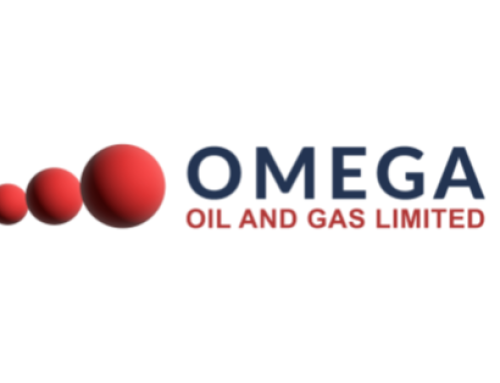SPE 223547: Stacked Pay Development Insights from Routine Sealed Wellbore Pressure Monitoring (SWPM)
Hydraulic fracturing is full of surprises, and this paper makes one thing clear—fractures don’t follow the rules we set for them. Devon Energy’s study on Sealed Wellbore Pressure Monitoring (SWPM) dives into how fractures actually grow in stacked-bench developments, and (spoiler alert) it’s not always how models predicted.
The research leveraged years of SWPM data to analyze fracture length, height, and geometry, and it turns out there’s no such thing as a “standard” fracture shape. Some formations showed tight vertical containment, while others expanded like an out-of-control lava flow. The study also found that fractures can keep growing long after pumping stops, meaning our previous assumptions on frac barriers and proppant distribution might need an update.
For operators navigating stacked pay developments, this study is a goldmine. It helps refine well spacing, frac design, and completion strategies by proving that one-size-fits-all fracture models just don’t cut it. By using SWPM to calibrate real-world fracture behavior, we can make better decisions, reduce interference, and maximize production efficiency. Bottom line? This research is a reality check on how fractures behave, and it’s a major step toward smarter, more effective unconventional well development.
SPE 223535: Far-Field Drainage Along Hydraulic Fractures: Insights from Integrated Modeling Studies in the Bakken and Permian Basin
If you’ve ever felt like hydraulic fractures have a mind of their own, this study confirms it. The authors took a deep dive into far-field drainage and fracture conductivity, using four field-scale datasets (two in the Bakken and two in the Permian Basin) to uncover how fractures evolve over time. The research integrates offset pressure observation wells, fiber optics, interference tests, and post-frac imaging to calibrate fracture conductivity loss and pressure depletion behavior—because nothing says “good engineering” like trying to predict the unpredictable. One key takeaway? Fractures don’t stay conductive forever—they lose efficiency with time, distance, and pressure drawdown (kind of like our patience with unoptimized well designs). The study also highlights how proppant immobilization plays a massive role in determining effective fracture length, meaning where and how we place proppant actually matters (shocking, right?).
This research is a goldmine for optimizing well spacing, completions, and drainage strategies. Understanding how fractures behave long after stimulation allows us to maximize production, minimize interference, and improve long-term recovery. Bottom line? Smarter frac designs, better well economics, and fewer surprises downhole. If nothing else, at least we now have science-backed reasons to blame fractures for underperforming wells.
SPE 223535: Incorporating Physical Observations into Analytical Models for Enhanced Well Performance Prediction in the Midland Basin
This paper blends physics-based insights with machine learning to refine well performance predictions—because why choose between science and statistics when you can have both? The authors tackle key industry challenges like parent-child well interactions, well spacing, and production forecasting, making this a valuable read for engineers optimizing unconventional reservoirs.
A standout feature is their treatment of drawdown management. They convincingly demonstrate that controlled drawdown prevents premature gas breakthrough and pressure depletion, leading to sustained oil recovery. Using Dynamic Multivariate Regression (DMVR), they capture real-time drawdown effects, showing how aggressive pressure drops can backfire—kind of like revving a car engine too hard and blowing the gasket.
Their hybrid approach—merging physics-based reservoir simulations with machine learning—aims to balance predictive power and interpretability. While the predictive gains weren’t dramatic, the framework sets the stage for future refinement. The offset residual method is another highlight, acting as a reality check for gaps in geological understanding.
The paper is well-structured, supported by strong data and visuals, though it’s technical enough to require a few cups of coffee. The authors effectively show that smart drawdown strategies lead to better long-term production, reinforcing that patience pays off—whether in oil extraction or waiting for your stocks to recover.
Overall, this is a solid contribution to reservoir modeling, proving that sometimes, less (drawdown) really is more (oil recovery).
SPE 223516: Flowback Analysis for Propped-Fracture Evaluation in Low-Permeability Reservoirs
This paper presents a thorough analysis of flowback data to evaluate propped fractures in low-permeability reservoirs, focusing on two real-world case studies. The authors apply history matching using modified Fetkovich and Wattenbarger type curves to assess fracture properties and compare flowback-derived characteristics with fracture design expectations and post-fracture production analysis.
One of the most critical insights in this study is how drawdown strategies impact well performance. The authors highlight that excessive drawdown can lead to water blockage, negatively affecting fracture conductivity and hydrocarbon mobility. Their results demonstrate that managing drawdown carefully helps sustain reservoir pressure and improve long-term production efficiency. By comparing flowback-derived fracture properties with pressure transient analysis (PTA) results, they show that higher drawdowns lead to a more rapid decline in permeability, reducing effective fracture length and width over time.
The use of straight-line analysis further validates their findings, providing high-precision estimates of fracture conductivity and permeability. The paper effectively illustrates how flowback analysis can be a powerful tool for identifying fracture effectiveness and formation damage caused by water retention.
While the paper is rich in technical details, it could benefit from a more practical discussion on implementing drawdown optimization strategies in the field. That said, it provides a compelling case for flowback monitoring as a diagnostic tool for fracture performance assessment. In short, a well-managed drawdown is like a good coffee drip—too fast, and you burn it; too slow, and you waste time, but get it just right, and you maximize the yield.






Leave A Comment